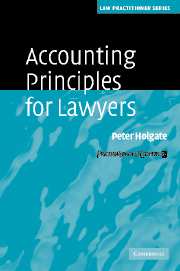Book contents
- Frontmatter
- Contents
- Acknowledgements
- Glossary of terms
- Part I The accounting environment
- 1 Introduction
- 2 UK GAAP and international harmonisation
- 3 The legal framework for accounting
- 4 Substance over form
- 5 The accounting profession and the regulatory framework for accounting and auditing
- 6 Communicating accounting information
- 7 Current trends in accounting
- Part II Some specifics
- Appendices
- Index
7 - Current trends in accounting
from Part I - The accounting environment
Published online by Cambridge University Press: 28 July 2009
- Frontmatter
- Contents
- Acknowledgements
- Glossary of terms
- Part I The accounting environment
- 1 Introduction
- 2 UK GAAP and international harmonisation
- 3 The legal framework for accounting
- 4 Substance over form
- 5 The accounting profession and the regulatory framework for accounting and auditing
- 6 Communicating accounting information
- 7 Current trends in accounting
- Part II Some specifics
- Appendices
- Index
Summary
Why all the change?
The financial reporting environment and the financial reporting rules that have to be applied are in a constant state of flux. The annual report of a UK listed company now looks very different from its equivalent of ten or twenty years ago. The same is true to a lesser extent for an unlisted company. The main factors that underlie the changes are:
developments in business
activities of standard-setters
responses to scandals.
Developments in business
Business transactions continue to be innovative and become more complex. Over the last twenty or thirty years, for example, the leasing industry has changed from being clearly in two halves – lessors who rent out equipment for the short term, and subsidiaries of banks who provide finance through finance leases – to an industry where a variety of players offer leases with varying degrees of risk for different parties, thus blurring the traditional clear divide. This has led to pressure to update the lease accounting rules to reflect contemporary business. A more obvious example is the whole area of financial instruments, including derivatives, which has witnessed an explosion in volume and sophistication in the last twenty years or so.
New industries also emerge and bring new accounting challenges. Revenue recognition – primarily the question of when (i.e. in which accounting period) revenue should be recognised – was not a problem when factories made goods, put them on a lorry and delivered them.
- Type
- Chapter
- Information
- Accounting Principles for Lawyers , pp. 69 - 74Publisher: Cambridge University PressPrint publication year: 2006



